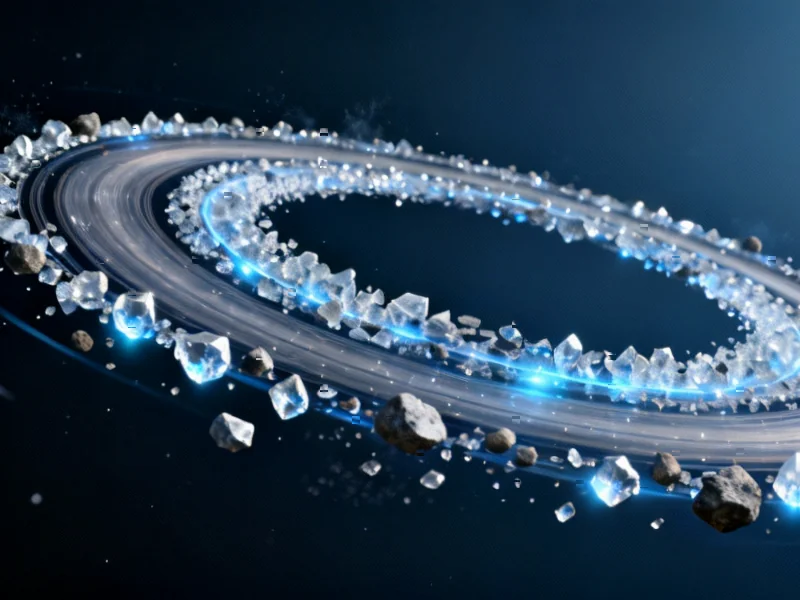Astronomers may be witnessing a celestial construction project of cosmic proportions unfolding in real time. According to recent observations from Brazil, material around Chiron—a small icy world orbiting between Saturn and Uranus—appears to be transforming from scattered debris into a structured ring system.
Table of Contents
A Rare Celestial Transformation
What makes this discovery particularly compelling is its apparent evolution. Sources indicate that by comparing current data with observations from 2011, 2018, and 2022, researchers have detected significant changes in the material surrounding Chiron. The team, led by Chrystian Luciano Pereira of Brazil’s National Observatory, reportedly observed the centaur as it passed in front of a distant star in September 2023.
Analysts suggest the telltale signature came from repeated dips in the star’s light—not just the single dimming you’d expect from a simple occultation. This pattern strongly hints at multiple rings or structured debris blocking the light at different intervals. The findings were published in The Astrophysical Journal Letters, offering what may be the first real-time glimpse into ring formation around a small solar system body.
Beyond the Gas Giants
When we think of ring systems, Saturn’s spectacular bands naturally come to mind. But Jupiter, Neptune, and Uranus all host rings too. More surprisingly, in recent years astronomers have discovered that even much smaller objects can maintain ring systems—including centaur Chariklo and dwarf planets Haumea and Quaoar.
Chiron itself has been something of a puzzle since its 1977 discovery. It was the first object identified between Saturn and Uranus that wasn’t a planet or moon, ultimately leading to the creation of the “centaur” classification for such bodies. For decades, astronomers have debated whether this rocky, icy world might host rings—controversial observations have come and gone, leaving the question unresolved.
Now, the Brazilian team’s data reveals what appears to be three well-defined rings at distances of approximately 170, 202, and 272 miles from Chiron’s center. Notably, they also detected evidence of a fourth, more distant structure about 870 miles out. This outermost feature is particularly intriguing because it exists beyond what’s known as the Roche limit—the distance within which tidal forces would prevent material from coalescing into a moon.
A Window into Solar System Evolution
The implications extend far beyond this single centaur. If confirmed, this evolving ring system would provide planetary scientists with something they rarely get: a chance to watch planetary rings develop in what amounts to real time. We’re essentially seeing a snapshot of how the mighty rings of Saturn and other planets may have formed over millions of years.
What remains unclear is whether we’re witnessing temporary structures or the birth of a more permanent ring system. The fourth ring’s position beyond the Roche limit raises questions—could this material eventually form a small moon? Or will it disperse? Only continued observations will tell.
The research team plans to conduct more observations as Chiron continues its orbit through the outer solar system. Each time it passes in front of a distant star, astronomers get another opportunity to study the structure of whatever surrounds it.
For now, the scientific community is watching closely. Witnessing celestial mechanics in action—especially around unusual objects like centaurs—provides invaluable insights into the dynamic processes that shape our solar system. As one researcher noted, it’s not often we get front-row seats to cosmic construction projects billions of miles away.



